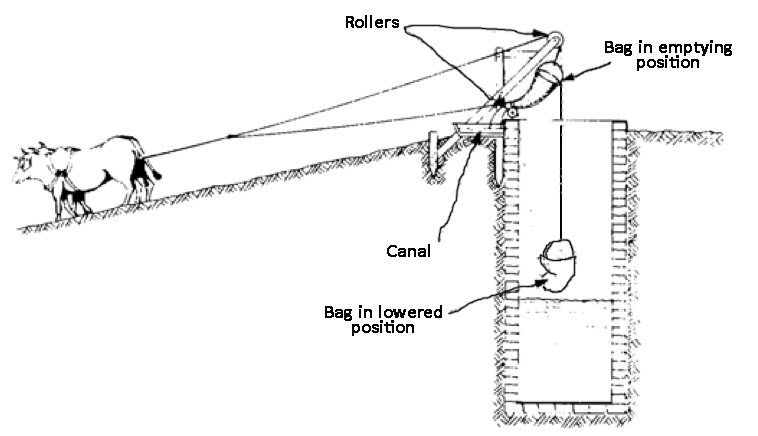Bucket hoists, Windlasses, and Mohtes
| |


The bucket hoist, windlass, Mohtes, and water skips are all modifications of the simple Rope and bucket system, to improve ease and efficiency.
There is a family of devices for pulling up a container of water on a rope. The simplest form for this is a rope and bucket, which in an improved form has a simple windlass, i.e. a hand operated winch, to increase the leverage and hence the size of bucket that can be lifted.
The output of such systems is generally too small for irrigation, (they tend to be used mainly for domestic or livestock water supply duties), but by powering the device with animals, usually oxen, sufficient water can be lifted to irrigate even through heads of 5-10m. This encouraged the evolution of the "self-emptying bucket", known in India as a "mohte". These commonly have a bucket made of leather or rubber, with a hole in its bottom which is held closed by a flap which is pulled tight by a second rope harnessed to the animals. The number in use today is still in the order of a million or more, so this device remains of considerable importance in some regions. Mohtes are discussed in more detail under Section 4.3 dealing with animal power as a prime mover.
Acknowledgements
- REVIEW OF PUMPS AND WATER LIFTING TECHNIQUES. Natural Resources Management and Environment Department, Food and Agriculture Organization (FAO).

